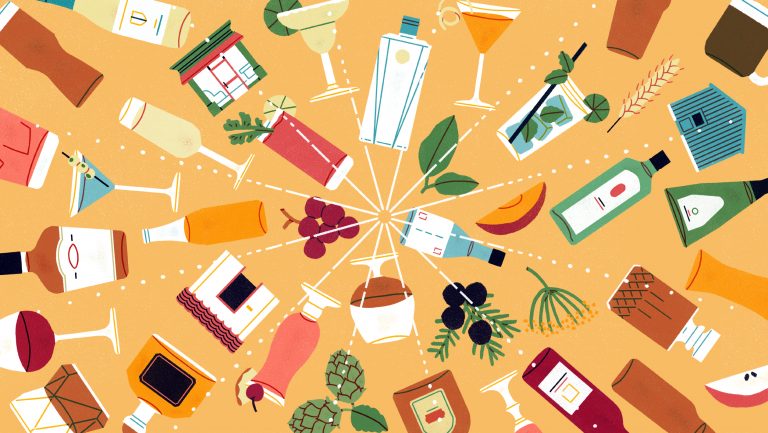Selling wine in restaurants isn’t always easy—and upselling guests? Even trickier. But upselling is a valuable sales technique, and when executed with tact, grace, and thoughtfulness, it can be a highly effective way to increase the sales of your wine program. Upselling doesn’t exclusively mean selling higher-priced bottles, nor does it have to be difficult. SevenFifty Daily spoke with five sommeliers about their strategies for successfully employing this technique so that it’s a boon to the wine program and the customer.
1. Propose Options in Different Price Ranges
The first step, says Chloe Grigri, the general manager of The Good King Tavern in Philadelphia, is to ask your guests what they like. Once their preferences have been established, she says, suggest a few bottle options in various price ranges. “I propose three options,” she says. “One priced high, one in the middle, and one super affordable. More often than not, the guest will choose one of the higher-priced bottles when given a lineup like this.”
Carlton McCoy, MS, the wine director at The Little Nell in Aspen, Colorado, points out that offering wines at a slightly higher price point opens consumers’ minds to bottles they may not have originally considered. “The sommelier,” he says, “must be knowledgeable and personable to make these special wines more appealing to the guests.”

Don’t miss the latest drinks industry news and insights. Sign up for our award-winning Daily Dispatch newsletter—delivered to your inbox every week.
2. Start with Sparklers
Adam Petronzio, the wine director of Oceana restaurant in New York City, explains that one of his go-to upselling techniques is to propose a glass of sparkling wine to a table as soon as the guests are seated. “After all,” says Petronzio, “who wouldn’t love a glass of bubbly to start off a great night out?”
3. Combine Course Pairings
McCoy says that aperitifs and dessert wines are the biggest areas where sommeliers can add to the guest experience. “Along with Champagne,” says McCoy, “a great bottle of Chablis or high-end Riesling could be used as a dual-purpose [bottle], both aperitif and first-course pairing.” By conveying the use of a single bottle for a dual purpose, the somm can more easily sell the full bottle rather than by-the-glass pours.
4. Sell by the Half Glass
Although it may seem counterintuitive, selling by the half glass can be another effective way to upsell. “Selling half glasses,” says Stacey Gibson, a sommelier at Park Avenue Wines retail shop and bar in Portland, Oregon, “is always a great way to boost sales in the beginning [of a meal], at the end, or between courses.” She explains that a half glass requires only a little bit of commitment on the guest’s part. “However,” she says, “if you add up all the half glasses you sell over time, it is a way to boost ticket sales and possibly introduce guests to a wine that’s out of their comfort zone.” She adds that 50 percent of a sale is better than no sale at all.
5. Use a Conversational Approach
Christopher Gaither, the wine director at Octavia restaurant in San Francisco, prefers conversation over persuasion. “Instead of saying, ‘Would you like a glass of Champagne to start?’ I’ll say, ‘Maybe we should [begin with] a glass of Champagne for you before moving into this food—we have a great small grower that does a blanc de blancs and it’s a staff favorite.’”
6. Pay Attention to Your Regulars’ Preferences
Petronzio explains that like many high-end restaurants, Oceana keeps notes on its regular customers’ preferences. “If I know a guest’s favorite white Burgundy producer,” he says, “I may recommend that they try one of the premier cru wines from that same producer.” He adds that this makes the upsell relatively easy.
7. Pitch a Dessert Wine
Many guests are already full by the time they finish their main course, so they may not be very likely to order dessert. McCoy sees this as a sales opportunity. “Our wine team [will often] suggest skipping dessert altogether in favor of a ‘liquid dessert,’” he says. It’s a strategy that works well at Little Nell.
8. Sell Rare Pours
The Coravin program at Park Avenue Wines enables Gibson to sell premium and rare wines by 2- or 5-ounce pours, all at accessible prices. “They are priced just a little over what you would pay for the retail,” she says. “The 2-ounce servings are a great way to make additional sales with a guest who may have finished a bottle or who doesn’t want a full glass and wants to add something special their experience.”
9. Create a Personal Connection
Gibson also says that creating a connection between the guest and the wine is a great way to encourage guests to go a little further in their spending. “Tasting notes can only go so far,” she says. “Making a connection between the guest and the vines or the people behind the wine creates an experience that guests are willing to pay for.” She explains that through the personal relationships the staff has developed with Park Avenue’s wine producers, they’ve learned—and can share—a lot of detail about the lives, families, and stories behind the wines they sell. “That,” says Gibson, “is always a solid route to sales.”
Vicki Denig is a New York-based wine and spirits journalist and wine educator, discovering the world through the lens of a glass, one sip at a time. When not tasting or traveling, she can most likely be found running through Astoria Park or sipping on Cabernet Franc.


